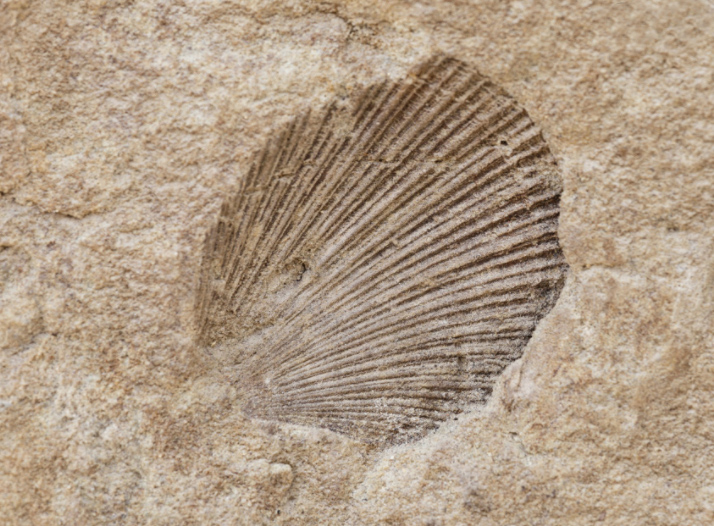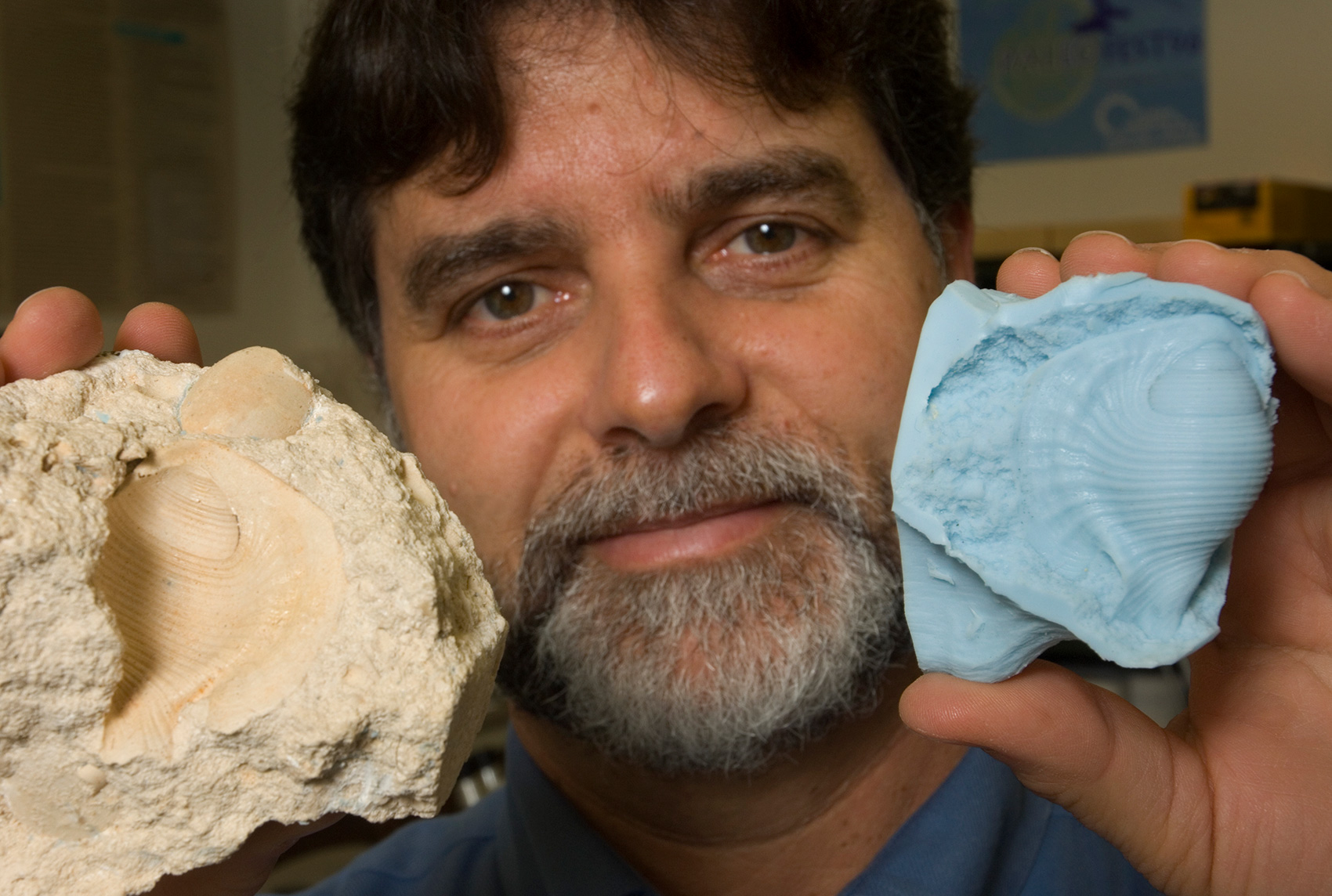Demonstrate the process of fossilization by making mold and cast fossils.

Materials
- Reusable or modeling clay, or salt dough (recipe below)
- Natural items such as seashell, leaf, twig, clean chicken or fish bone
- White glue
Salt Dough Recipe
- 1 cup salt
- 2 cups flour
- ¾ – 1 cup water
Mix the salt and flour together. Add the water a little at a time until you have a thick dough. You do not want it to crumble, but you also do not want it too wet and sticky.
Engage
What is a fossil? Fossils are the preserved remains of ancient life. They are often actual body parts such as bones or teeth but can also be impressions left behind from part of an organism. Show pictures of fossils.
Look at pictures of mold and cast fossils, such as fossil shells in limestone. Sometimes when an animal dies and its body decays, it can leave an imprint in the sediment. If this imprint fills in with minerals from sediment and groundwater, it can harden to form a fossil. This fossil is called a cast fossil. The fossilized imprint is called a mold fossil.
Explore
Make a mold fossil:
- Give each student a ball of reusable or modeling clay or salt dough.
- Roll, soften and flatten the clay. This represents the sediment such as sand or silt.
- Press the shell, or other object, into the clay.
- Very carefully remove the shell from the clay.
Explain
- What do you see? The imprint left behind represents the mold fossil. The mollusk died and settled on the ocean floor. Over time the shell was buried with sediments. As time goes by, sediments continue to settle and pile up causing the lower layers to become compacted by the weight of the layers on top. The animal and its shell decomposed and disintegrated but its imprint was buried and hardened into rock.
- Fossils can then be brought to the Earth’s surface by earthquakes, mountain formation, erosion or construction, where they are found by paleontologists or fossil hunters.
- Today this process only took a few minutes. How long do you think it takes for fossils to form in real time? It takes thousands of years.
Extend
 Make a cast fossil:
Make a cast fossil:
- Create a fossil mold but do not press the object very deeply into the clay.
- Fill the fossil mold with white glue. This represents sediments accumulating in the impression over time.
- After 24 hours, gently pull the dried glue off. This represents the cast fossil. Over time the organism’s shell would deteriorate and the impression would fill with sediments. After thousands of years, minerals from sediment and/or groundwater harden forming a cast fossil of the mollusk.
Evaluate
- What is the difference between a mold fossil and a cast fossil?
- This process represents fossilization and only took one day. How long does actual fossilization take?